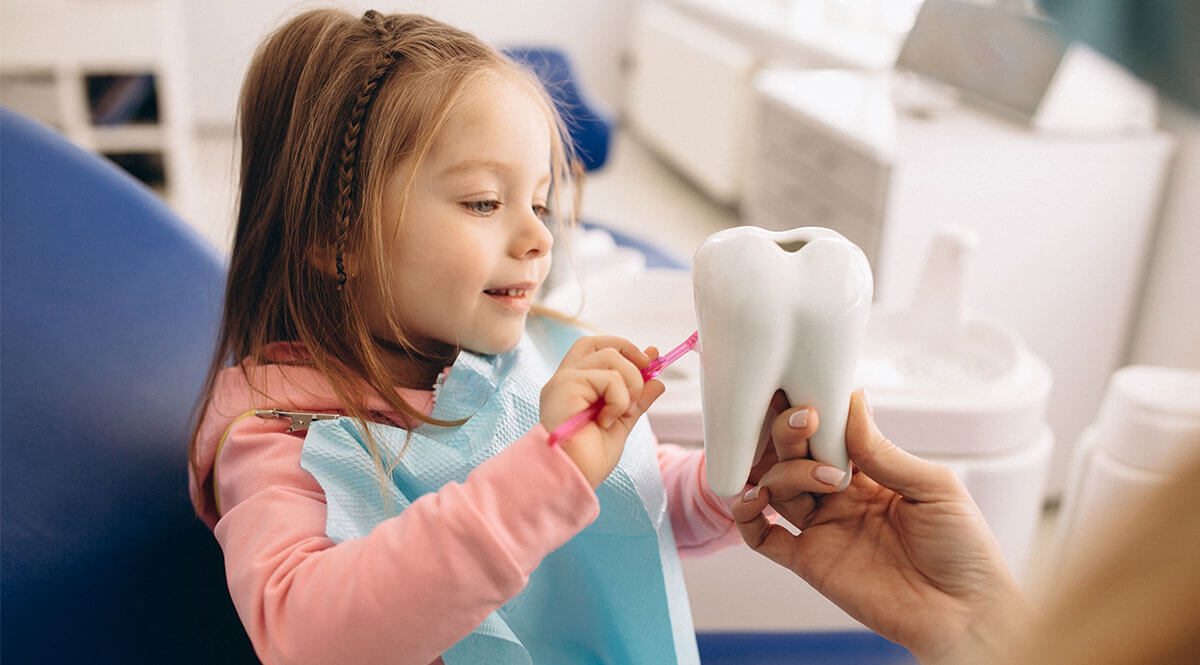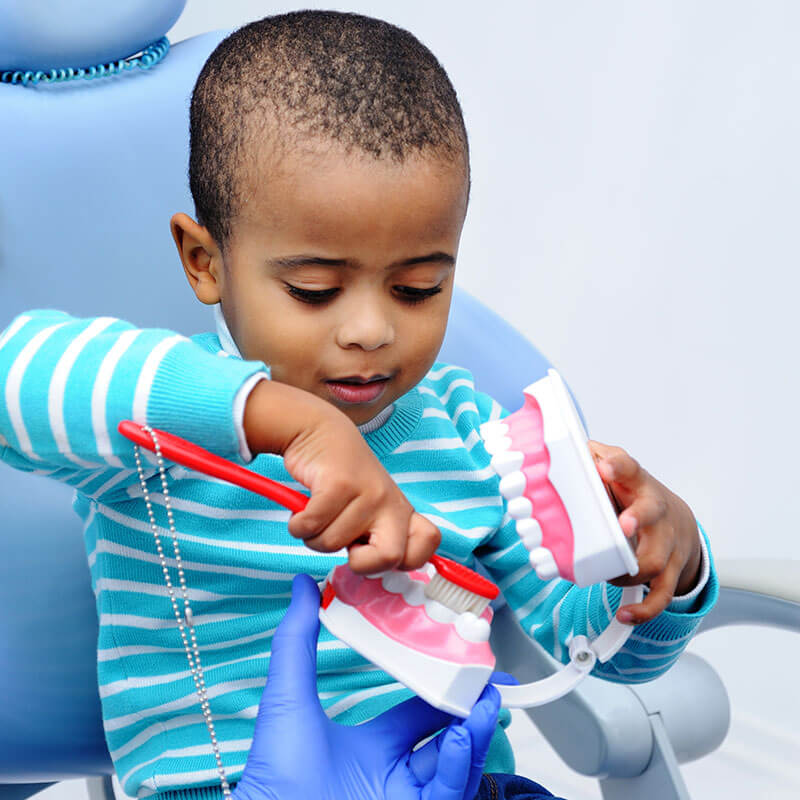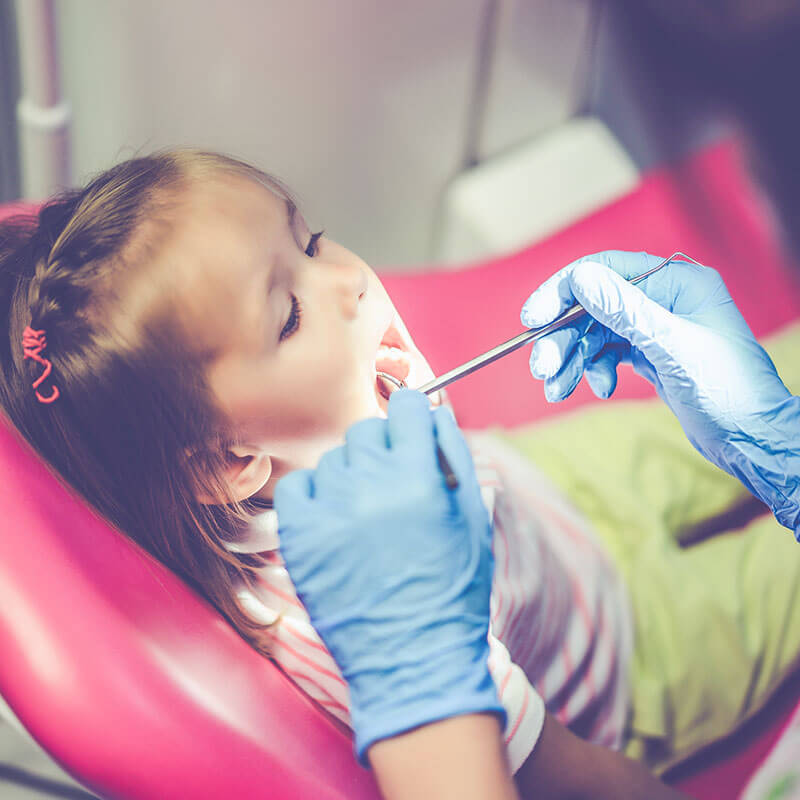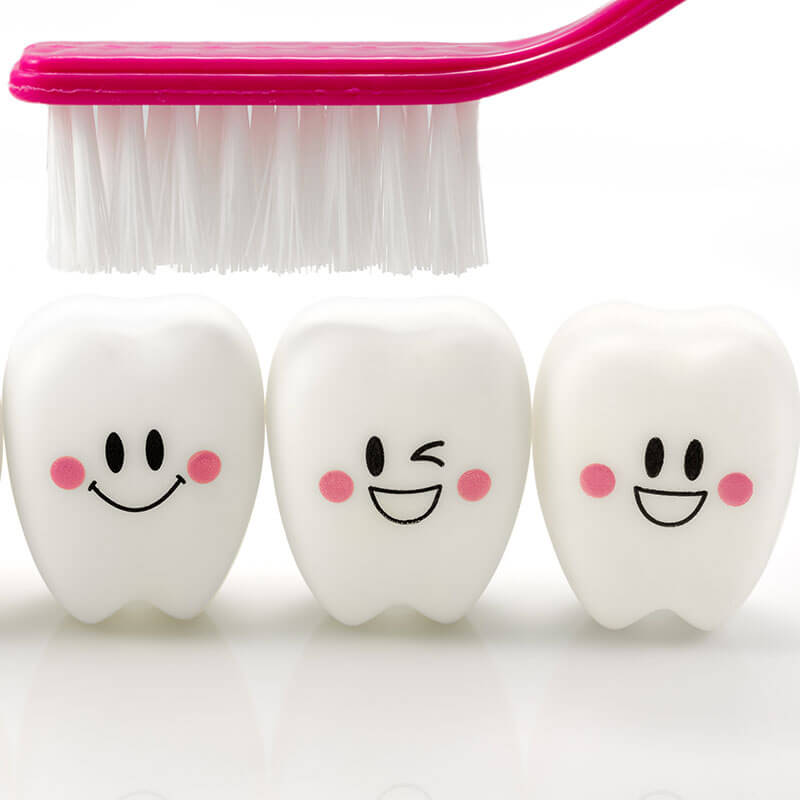How to Brush Teeth and Visit the Dentist with a Child with Autism
March 03, 2020
March 03, 2020

Ask any parent, and they will tell you the significance of proper hygiene is not the easiest to instill in young children. Most kids would rather play with their toys, run in circles around the couch or even throw themselves on the floor in tears rather than wash their hands, take a bath, “go potty,” or brush their teeth. Add autism spectrum disorder (ASD) or sensory-processing disorders into the mix and families could have an especially challenging time encoring their kid to open their mouth, let alone hold a full teeth-brushing session or dental visit.
This struggle is common and is a goal our clinicians regularly help children work toward at Hopebridge. Each of our centers houses fully equipped naturalistic teaching environments like kitchens and bathrooms, which allow our team to tackle teeth-brushing through applied behavior analysis (ABA therapy) and occupational therapy, but there are steps and strategies families can also put in place at home.

One of our Hopebridge BCBAs remembers talking to the parents of a 5-year-old who refused to brush his teeth. Often resorting to physically restraining him to meet his dental health needs, they desperately sought help in this area. Together, they worked on this skill through compassionate ABA procedures at Hopebridge and the results are incredible. The boy will now go out of his way to grab his toothbrush and bring it to his parents, ready to brush away. The process was a great experience for the family and all of their lives are a lot easier now that he not only tolerates brushing his teeth, but seems to truly enjoy it.
To help other families dealing with these challenges, our ABA and OT teams shared some tips to advance oral health habits at home and help make them part of daily living.
1. Try to understand why your child does not tolerate typical dental care routines.
Many children on the spectrum have aversions to brushing their teeth, whether it is because of the feeling of the brush, the taste or smell of the toothpaste, or the sound of the bristles hitting their teeth. Kids with sensory-related aversions like this may benefit from systematic desensitization procedures, as part of ABA therapy, which can help them tolerate the various aspects of teeth-brushing. It can be helpful to have a dental checkup (more tips on this below!) prior to beginning any oral health-related therapy programming. A dentist can review whether there are any medical or biological factors that could impede therapy, such as a deep cavity that is causing the child pain.
2. Choose a toothbrush together.
Choice plays a big role in a child’s confidence and independence. It can be fun to pick out a toothbrush together at the store or online. From your standpoint, make sure it is the right size for your child. Then give your kiddo the chance to choose between all the available colors and characters to help build excitement. There is no need to worry about a battery-powered or electric toothbrush at this time, as you will likely need to build tolerance first.
3. Act it out.
Before beginning, it can be helpful to have your child become accustomed to the idea of teeth-brushing by having him or her watch you brush your own teeth. You can also suggest they take a turn brushing your teeth. Other resources like photos of kids brushing their teeth, social stories and visual schedules can also be useful.
4. Find a comfortable setup.
Dental care does not have to take place at the sink or even in the bathroom at all (though it is helpful). If necessary, find another area that is comfortable for them, such as a bean bag chair or couch. Have a water cup handy and sit behind them with their head on your chest for support.
5. Break it up into smaller goals.
In many cases, the kids may need to be desensitized to the experience of teeth-brushing. In our centers, this typically means incorporating graduated exposure into our program. We work step by step and it may take days or weeks to accomplish each goal. Caregivers can follow a similar process at home. For instance, maybe the child just holds the toothbrush the first day. The next day, suggest they just touch their lips with it. Other steps may include placing it just inside the mouth without toothpaste, asking them to “open wide,” and then a quick brush back-and-forth before moving onto tolerating longer periods of brushing. Flossing is also an important part of oral health and can be introduced in a similar fashion.
6. Use support tools and reinforcers.
Whether your child is still building tolerance or moving onto building independence in this skill, consider using a timer or play a song that guides them to an adequate duration of teeth-brushing and flossing. Don’t forget reinforcements! Use verbal praise to let your child know you are proud of their progress and have other preferred reinforcers handy throughout the process.

Like brushing teeth, visiting the dentist can also be stressful, but is necessary for dental health. Before scheduling an appointment, our clinicians recommend researching to find a dental center that has a history of working with children on the spectrum, such as Sky Pediatric Dentistry, which specializes in working with children who have special needs. If you do not know of one in your area, reach out to other families within your autism support group or local autism organization for suggestions.
Once you find a dental office that seems to fit the bill, tell them about your child’s aversions and sensitivities in advance so they can better prepare for the appointment. For example, maybe it would be helpful to dim the lights, or maybe your kiddo has swallowing challenges or trouble tolerating anything around his or her mouth. Preparation will lead to a more successful experience overall.
Graduated exposure can help in this scenario as well. You may need to drive them to the office once or twice before going inside. With approval from the dentist, you can also take them inside for a tour in advance of the appointment. Ask the dentist if your child can see and hold the instruments before they are used inside the mouth. If x-rays will be part of the office visit, you can request some of the bite wings to take home and practice placing inside the mouth prior to the appointment.
Once they begin, communication is key. Ask the hygienist and dentist to talk about what they are going to do throughout the visit. Once again, do not forget your kid’s reinforcers for a job well done!

It is highly important for families to introduce teeth-brushing and flossing as soon as possible. Not only is it imperative for overall dental health, but the longer it waits, the more difficult the challenge will be to overcome.
Early interventions are beneficial for putting your child on the right track in hygiene, and Hopebridge can help. Contact us to learn more about how our autism therapy services can help your kiddo build these functional skills from the start.
Tips and Advice
March 16, 2022
Why Interactions with First Responders are Significant for Children with Autism
Autism Therapy
September 23, 2025
How to Help Children with Autism Manage Transitions Smoothly
Parenting Resources
March 03, 2025
Spring Forward: How to Prepare Kids for the Time Change